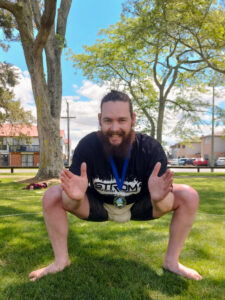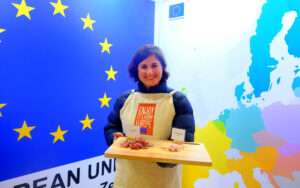Last year’s winning Fieldays invention goes global
Rural Otorohanga inventor Kalvin Singh is going global with a device made in a bloke’s shed.
In rural Otorohanga sits a shed like any other, housing just what you would expect to see in such a setting. There are tractors, trailers, cars and balers all in various states of age and condition. The sounds are also what you might expect: a classic rock radio station fills the air.
This, however, is not the average shed. Inside it are inventions that are the embodiment of the New Zealand number eight spirit. They are born from necessity and ingenuity and the world is taking notice.
It is taking notice of Kalvin Singh.

A year ago he won the Golden Standard award at the Fieldays, giving him the title of Invention of the Year and a $5000 prize.
It took 10 years of refining his invention, the “Maxi-trak Quatro”, to the stage that it was ready to be pitted against others in the competition.
The idea is a simple one: transfer the weight of a trailer to the front of the tractor.
Singh didn’t invent weight transfer: that idea has been around since tractors were first used to pull trailers. Until now, weight has been added to the front of the tractor or power from the tractor has been used to pump hydraulic fluids which shifted the weight of the trailer, techniques that may get the job done faster but use more energy.
Singh took a different approach. A chain linked to the front of the tractor and an adjustable hydraulic setup used the weight of the trailer to pull down the front wheels, giving more grip and increased fuel efficiency. He used energy that was already there but was getting wasted.
“Other systems add weight to the front. Say, if you’ve got a one to one weight where the tractor and the implement weigh the same, they add weight to the front to make it heavier. That’s going to give it more traction but you’ve got all the extra weight that needs to be pushed and carried so you need more energy. That idea does nothing for fuel efficiency and when fuel was 35-40 cents a litre it kind of didn’t matter. What we have achieved is to allow the entire weight of the implement to favour the nose of the tractor.”
Singh, who runs an engineering business, prides himself on the simplicity of his idea, which has already passed the notoriously difficult hurdle of the American patents office.
Since last year’s Fieldays, he has talked with Case International about how to convert the idea into a marketable product, and they have progressed to field testing.
“It’s great for countries such as New Zealand to put forward great ideas such as this,” says Case International’s national operations manager Frans Onland. “It shows that really good engineering innovation doesn’t have to come from Europe or USA. Competitions such as that at the Fieldays are a great way for us to get out and see them.”
Singh has high praise for the Fieldays and in particular the Invention contest, which he says is a great launch pad and great for media attention.
“I’ve used that prestige as a bit of a springboard. Obviously it’s got me a bit in the door with some people like Case. “
And will we see Singh back at the invention competition? It could be.
“Mate, I’ve got inventions here that I can’t even tell you about.”




